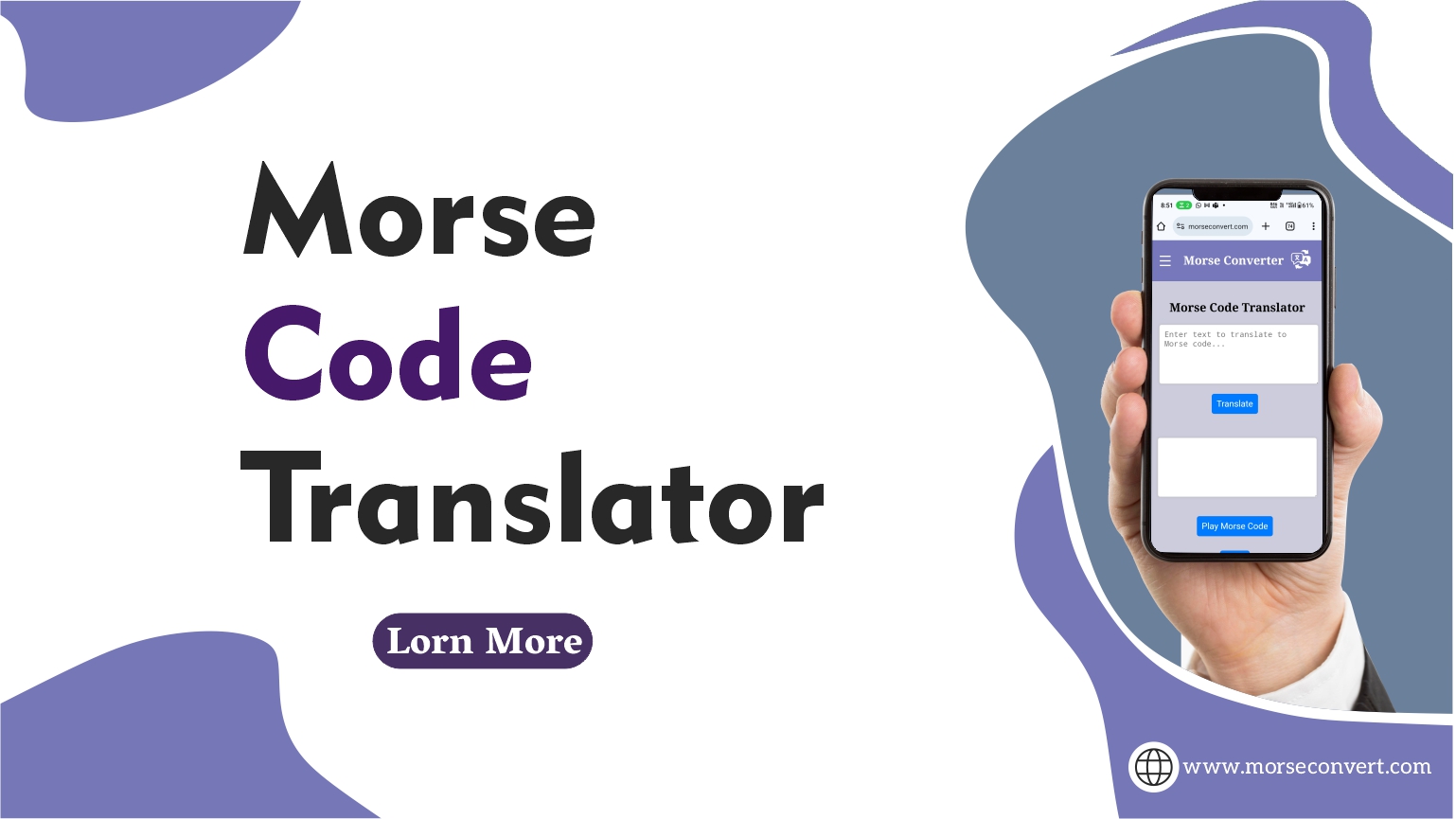Text letters can be converted into a series of dots and dashes, or short and long messages, using the Morse code technique. These signals can then be sent over great distances by radio waves, light, or sound. Samuel Morse and Alfred Vail created it in the early 1830s as a means of communication via telegraph systems.
Every letter of the alphabet and every number is represented in Morse code by a different combination of dots and dashes. The letter "A" is represented by ".-", the letter "B" by "-...", and the number "1" by ".----". You can send these sequences by beeping or toning repeatedly, tapping, or flashing a light. One of the primary benefits of Morse code is its ease of use and effectiveness, which makes it particularly helpful in scenarios where verbal communication is unreliable or impossible, such as amateur radio, emergency circumstances, and maritime communication.
Even though it is used less frequently than in the past, morse code is still utilized today, primarily by enthusiasts, in aviation, and for some emergency signaling applications. Morse code was originally created by Samuel Morse as an easy means to send messages across telegraph lines. Military forces popularized its use during WW1 and WW2 to communicate secret messages across telegraph wires or radio signals
Features of Our Translator:
- Automatically detects and translates Morse code or text.
- Options to customize letter and word separators.
- Transmit Morse code using your device's speaker.
- Customize Morse code versions, transmission speed, tone frequency, and more.
- Easily paste and copy translations, and share with other applications.
FAQs:
Text letters can be converted into a series of dots and dashes, or short and long messages, using the Morse code technique. These signals can then be sent over great distances by radio waves, light, or sound. Samuel Morse and Alfred Vail created it in the early 1830s as a means of communication via telegraph systems.
What are dots and dashes in Morse Code?
Dots (·) represent short signals, and dashes (–) represent long signals. These signals are used to encode letters, numbers, and punctuation marks.
How is Morse Code transmitted?
Morse code can be transmitted using sound, light, or radio waves. For example, in sound transmission, short signals are represented by short beeps or tones, while long signals are represented by longer beeps or tones.
What are some examples of Morse Code?
- The letter "A" is represented as ".–"
- The letter "B" is represented as "–..."
- The number "1" is represented as ".----"
- The punctuation mark "." (period) is represented as ".-.-.-"
Is Morse Code still used today?
While it's not widely used for communication anymore, Morse code is still relevant in certain fields like aviation, amateur radio, and emergency signaling.
How can I learn Morse Code?
There are many resources available online, including websites, apps, and books, that can help you learn Morse code. Practice is key to becoming proficient.
Why is Morse Code important?
Morse code played a significant role in long-distance communication before the advent of modern technology. It's also important historically and culturally as a pioneering form of communication.
Can Morse Code be translated into text?
Yes, Morse code can be translated into text and vice versa using charts or software. Many online tools are available for Morse code translation.
How fast can Morse Code be sent and received?
Proficient operators can send and receive Morse code at speeds ranging from 5 to 40 words per minute or even faster.
Is Morse Code considered a form of encryption?
Morse code itself is not encryption, as it doesn't change the meaning of the message. However, it can be used as part of encryption techniques to transmit messages in a covert or secure manner.
